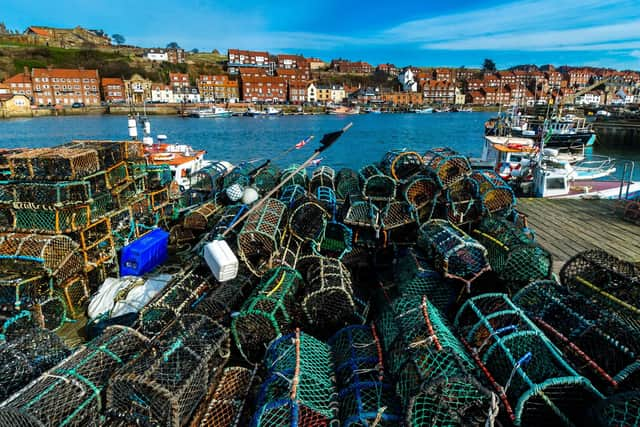Claims about what killed thousands of crabs and lobsters will be 'cross examined' by MPs
The Environment Food and Rural Affairs Committee will examine the different explanations, the impact the mass die off has had on local communities and what can be done to prevent it from happening again, at a hearing on October 25.
The dead crustaceans began washing up on beaches in Yorkshire and the North East 12 months ago, and local fishermen claim their livelihoods are at risk because catches have been decimated.
Advertisement
Hide AdAdvertisement
Hide AdThe Government has said it was a naturally occurring event, caused by an algal bloom.


But scientists from four universities have conducted research which suggests the sea creatures may have been poisoned by an industrial chemical called pyridine, which was disturbed by dredging in the River Tees.
Sir Robert Goodwill, who chairs the committee, said: “We thought it was a good idea to cross examine them and test their theories.
“We can cross examine and raise questions, but I’m not sure if we will be able to come to a firm conclusion.”
Advertisement
Hide AdAdvertisement
Hide AdMr Goodwill, who is also the MP for Scarborough and Whitby, said the chemical pollution theory has gained academic support in recent months and that “gives it more credibility” but there is also evidence which contradicts it.
“If it had been a toxic chemical, you would have expected dead fish as well, which there weren't,” he said. “And if the level of pyridine 25 miles down the coast was sufficient to kill the crabs, the level at the dump zone would have been off the scale.”
An investigation led by the Department for Environment, Food and Rural Affairs (Defra), found a naturally occuring algal bloom is “the most likely cause”.
The bloom was detected by satellite imagery and algal toxins were found in samples taken from some of the crustaceans.
Advertisement
Hide AdAdvertisement
Hide AdHowever, a group of fishermen, known as the North East Fishing Collective (NEFC) and academics from Durham, Hull, York and Newcastle Universities have published a report which stated pyridine “could have played a major part in the observed mass mortality events”.
In a report, they said preliminary evidence suggests the crab deaths are “more consistent with poisoning by industrial toxins than by natural algal toxins” and more analysis must be done “as a matter of urgency”.
Defra has repeatedly stated there is no evidence to suggest that dredging or chemical pollution caused the mass die off, and no pyridine was found in the water.
Some pyridine was found in the dead crabs, but Defra stated it did not kill them and can form naturally after death. The Government agency also said “varying amounts” have been found in crabs in other parts of the UK.
Ministers have said there are no plans to provide compensation for fishermen, as it was a naturally occurring event.